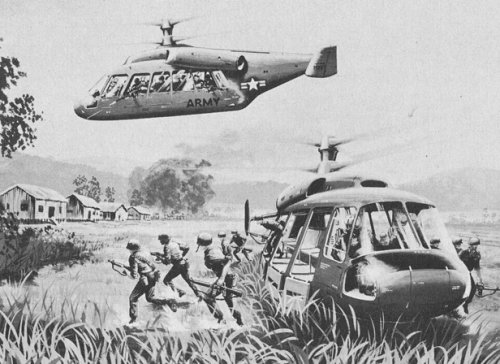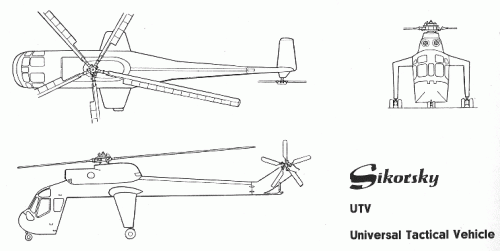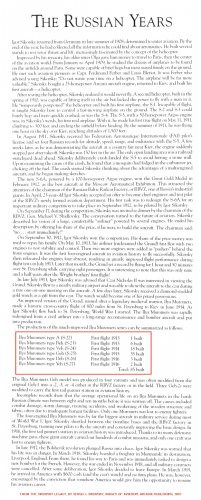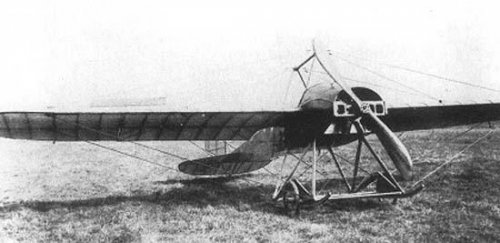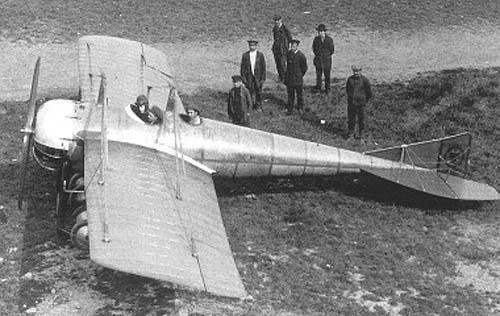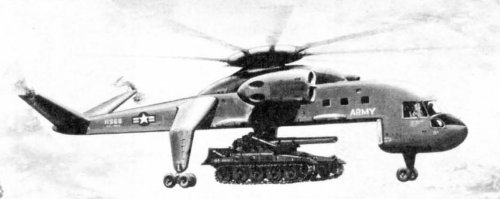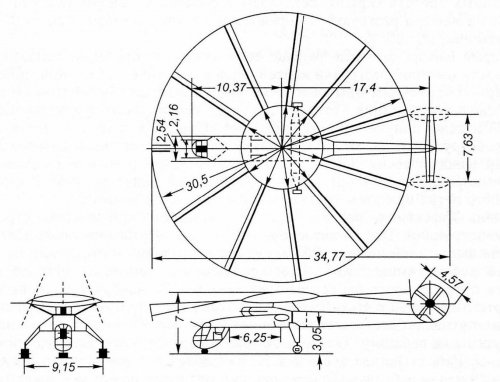American SIKORSKY Basic Model Numbers 29-92
designation description [military designation and/or ATC]
S-29 cheap biplane passenger transport
S-30 large biplane for 10 passengers
S-31 4-place trainer/photo biplane with 200hp Whirlwind
S-32 4-seat biplane with 2 cabins for Andean National Corp.
S-33/A MESSENGER biplane racer with 60hp Wright Gale for NY races
S-34 6-passenger twin-engine, twin-boom flying-boat
S-35 2-3 engine biplane with tanks for André Fonck's 1926 NY-Paris TransAtlantic Attempt
S-36 8-passenger, twin-engine amphibian, one to Pan American in 1929
SN-1 parasol-winged Standard J-1 conversion
G-S-1 (UN-4) modified Curtiss JN-4D fuselage with a Sikorsky-Gluhareff high-lift parasol wing [2-23]
no designation re-winged Travel Air Model B
S-37 / VS-37B GUARDIAN similar to S-35 with 6400 kms range; also bomber version (= Consolidated Model 11) [2-170, XP-496]
S-38 AMPHIBION development of S-36; first US military order and biggestt-selling pre-helo Sikorsky [PS, RS, C-6, ATC-60,-126…]
S-39 SPORT AMPHIBION 4-5-seat high-wing flying-boat with single engine [C-28, ATC-340,-375…]
S-40 CLIPPER 4-engine 44-seat transport flying-boat for Pan American [ATC-454,-562]
S-41 AMPHIBION 15-seat high-wing monoplane, a variant of S-38 with Hornet engines [RS, ATC-418, 2-286]
no designation US Navy flying-boat with tandem R-1340-88 pusher/tractor in interwing nacelle [P2S]
no designation US Navy experimental scout-observation flying-boat experiment for carrier duty [SS]
S-42 CLIPPER 32-passenger flying-boat with four Hornet engines for Pan Am [ATC-544,-592]
S-43 AMPHIBION 16-25-seat amphibian transport for Pan Am, better known as the 'BABY CLIPPER' [OA-8,-11, ATC-593,-623]
S-44 FLYING DREADNOUGHT / VS-44A development of S-36 as large patrol-boat, and civilian transport [PBS, JR2S, ATC-752]
S-45 FUTURE TRANS-OCEANIC transatlantic clipper project for Pan American (project N°M5-35); cancelled
no designation cancelled long-range bomber project for USAAF [BLR-3]
DS-160 first large transport helicopter project with original rotor configuration; not built
S-46 / VS-300 first successful US helicopter; 1931 single-rotor design, 18 major modifications
S-46 / VS-300A set helicopter endurance record and perfected two-rotor, cyclical-pitch control system
VS-310 KINGFISHER not a Sikorsky design; Vought project allocated a VS- designation circa 1941 [OS2U]
VS-315 "SKIMMER", "FLAPJACK" not a Sikorsky design; Vought project allocated a VS- designation circa 1941 [F5U]
S-47 / VS-316A (HOVERFLY I) 1st production helo; development of VS-300A with Warner Super Scarab engine [R-4, HNS]
VS-317 CORSAIR not a Sikorsky design; Vought project allocated a VS- designation circa 1941 [F4U]
VS-326 high-altitude test planes to test R-4360 Wasp Major fitted with turbosuperchargers
S-48 / VS-327 transport development of R-4 design with longer fuselage and Wasp Jr. Engine [R-5, H-5]
S-49 / VS-316B (HOVERFLY II) refined development of R-4 with Lycoming or Nash-Kelvinator engine [R-6, R-7, HOS]
S-50 abandoned small helicopter project, wooden mock-up only
S-51 DRAGONFLY / WS-51 WIDGEON II refinement of S-50, some license-built by Westland [H-5, HO3S]
S-52 two-seat, later four-seat experimental helicopter [H-18, HO5S
S-53 experimental helo with tricycle gear, small tail rotor pylon, tailplane, metal folding rotor blades [HJS]
S-54 R-4B bought back by Sikorsky and modified to the "sesqui-tandem" configuration
S-55 CHICASAW / WHIRLWIND military transport and civilian variants, some built under license by Westland [H-19, HO4S, HRS]
S-56 *MOJAVE / °WESTMINSTER US Marines large ASW helicopter and *transport Army variant, also built by Westland° [HR2S]
S-57 RETRACTABLE ROTOR experimental design competing with the Bell and McDonnell convertiplanes; not built [XV-2]
S-58 CHOCKTAW/SEABAT/SEAHORSE / WS-58 WESSEX utility/transport/ASW, multi-service, some by Westland [H-34, HSS, HUS]
S-59 H-18 modified with Artouste turbine for tests [H-39]
S-60 SKYCRANE flying-crane prototype pre-dating the S-64 series
S-61 SEA KING / JOLLY GREEN GIANT / PELICAN search and rescue / transport multi-service helicopter [H-3, CH-124, HSS-2]
S-62 SEA GUARD search and rescue helicopter developed specifically for US Coast Guard [H-52, HU2S]
S-63 initial designation of the S-62B
S-64 SKYCRANE / *TARHE flying crane used both in Army* and civilian service [H-54]
S-65 STALLION / SEA STALLION / SUPER JOLLY heavy transport and/or armed helicopter for US Marines and USAF [H-53]
S-66 AAFSS proposal, competing with Lockheed's YAH-56 Cheyenne; mock-up only
S-67 BLACKHAWK gunship demonstrator; crashed
S-68 AARV (Aerial Armoured Reconnaissance Vehicle) helicopter project
S-69 ABC Advanced Blade Concept demonstrator with counter-rotating rotors on top of one another [H-59]
S-70 BLACK HAWK / SEAHAWK / JAYHAWK… multipurpose helicopter used by the Armed Forces over the world [H-60]
S-71 AAH (Advanced Attack Helicopter) competitor of YAH-63 and YAH-64
S-72 'X-WING' RSRA (Rotor Systems Research Aircraft)
S-73 HLH (Heavy Lift Helicopter), competitor of XCH-62
S-74 no details
S-75 ACAP (Advanced Composite Airframe Program)
S-76 SPIRIT / H-76 SHADOW / EAGLE (NOTE: "H-76" not a DoD designation)
S-2000 EAGLE 'FANTAIL' also called H-76B (not a DoD designation)
S-78 alternate designation of S-70C-20
S-80 SEA DRAGON / SUPER STALLION designation of certain variants of the H-53
COMANCHE LHX program winner with Boeing; production canceled [H-66]
S-92 HELIBUS / SUPERHAWK / *CYCLONE [*CH-148]
CYPHER / CYPHER II / MARINER family of ring-shaped UAVs
SPEEDHAWK Piasecki modified H-60 to demonstrate the X2 technology [X-49]
S-97 RAIDER future candidate for H-60 replacement using X2 technology
NOTE: Designations in red indicate additions and modifications from the initial list.
The designations S-46, S-47, S-48 and S-50 were differently allocated in earlier and less reliable sources.
The new allocations correspond to publications emanating from the Sikorsky Archives.

